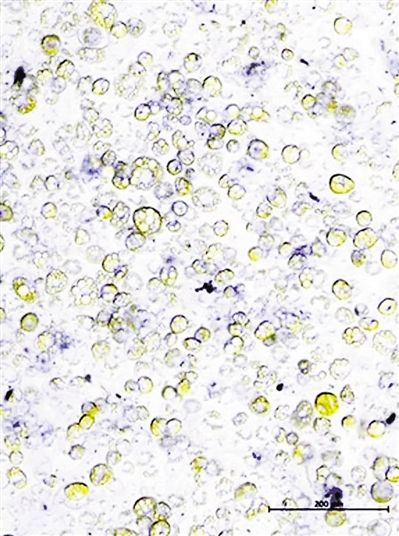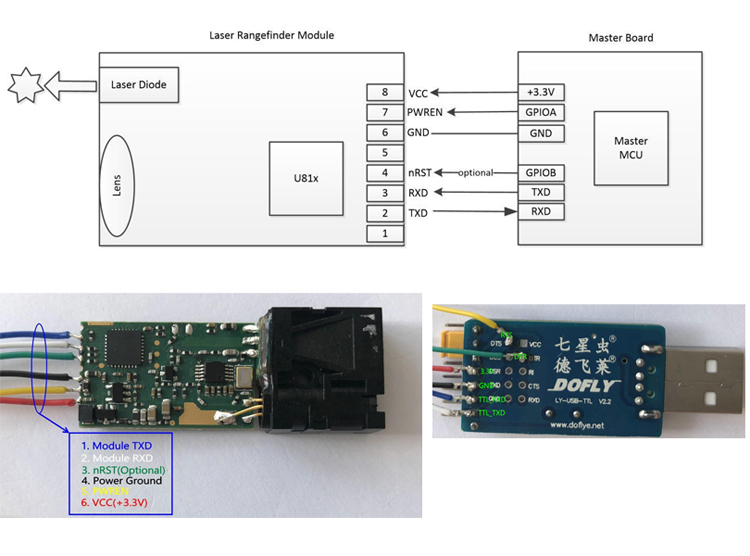Clean the room, dust can make people fat
The spindle-shaped fat precursor cells become more rounded after being subjected to the treatment of the dust extract. A greater number of blue (DNA) markers indicates an increase in the number of cells, and yellow lipid staining indicates fat. We can observe cells at various stages of development - some yellow lipids already occupy the entire cell space.

Image source: Christopher Cassodis
We all know that dust can irritate us and make the house dirty, but can it make us fat?
A recent paper published in Environmental Science and Technology shows that this is very likely.
Dust can cause metabolic disorders
An earlier study found that indoor dust is mixed with dander, pollen and other fine particles from the surrounding environment, as well as endocrine disruptors or chemicals that affect hormone changes in the body. Hormones are chemicals that help regulate body function. Our fertility, mood changes, and weight fluctuations are all affected by hormones.
Christopher Cassodis, an endocrinologist at the Nicholas School of the Environment at Duke University, is the author of the paper. In the previous study, the researchers found 41 chemicals in indoor dust samples. In this experiment, Casodis and his colleagues used these substances, including phthalates, plasticizers for plastics such as vinyl, and parabens. Preservatives in cosmetics and pharmaceuticals, and common household insecticides such as permethrin, are used exclusively to drive off pests such as mosquitoes and cockroaches. The experimental model they used was called the mouse adipose precursor cell model. Researchers have tried to see if these chemicals can induce the conversion of fat precursor cells into mature fat cells.
Casodis said, "This model is very reliable. It appeared 50 years ago. The fat precursor cells are cells that have been differentiated in the laboratory for two weeks, and we know the mature white fat. The cells are similar. These cells, which resemble mature adipocytes, surround the periphery of the precursor cells and begin to proliferate."
If a chemical can induce precursor cells to produce such fat-like cells, and the number of cells exceeds the normal baseline value, there may be two reasons: either the precursor cells themselves become larger or precursors. The cells are stimulated to proliferate rapidly. And this marks that chemicals may promote the storage of fat by cells. About two-thirds of the chemicals tested by the team of Casodis trigger the transformation of precursor cells.
In another experiment, Cassodis collected indoor dust samples from 11 houses in central North Carolina, USA. The occupants of these houses have lived for at least two years and have not been cleaned with a vacuum cleaner for at least 2 days before sample collection. That's right, that's what you think – the researcher told the homeowner that in the name of science, don't clean it.
The researchers then tested the extracts of these dust samples using the mouse fat precursor cell model described above, and found that 10 of the 11 samples induced the conversion of precursor cells into fat cells.
According to Cassodis, this suggests that dust poses a major health hazard – metabolic disorders, which may be more serious than we thought before.
Children are more sensitive people
This finding is worrying, especially in families with children at home, and parents need to pay more attention – children are often more sensitive to endocrine disrupting substances. Part of the reason for sensitivity is that the child is too weak, inhaling the same dose for children and adults, and endocrine disruptors may have a greater impact on smaller children.
An ordinary child climbs up and down the ground every day, stuffing his dirty fists and toys into his mouth, inevitably inhaling dust. The US Environmental Protection Agency has estimated the amount of dust a child may inhale in their daily lives. According to the above studies, the average amount of dust inhalation of these children is sufficient to trigger the fat conversion we observed in mouse cells. However, Jennifer Schleizinger, an associate professor of environmental health at the Boston University School of Public Health, said the experiment has limitations, and that mouse cell-level research is not the same as human exposure to indoor dust. Every day we move around, the pollutants must be separated from the dust and pass through the skin in some way to be absorbed by the body – so only a portion of the chemicals in the dust actually enter the body.
Researchers have not said that indoor dust is what causes Americans, and even humans around the world (and rats in the lab) to become fatter. Subsequent research will conduct experiments on this issue, but not this one. Casodis said: "Because the fat precursor cell model is very reliable, we know it very well, so there are already a large number of studies that have applied this experimental model to humans." Epidemiological studies have shown that exposure to these The higher the degree of chemicals, the more confusing the body's metabolism is. We may not have direct evidence that the effects of chemicals on mouse cells are the same as their effects on the human body, but the experimental results obtained today clearly point in this direction.
Use chemical cleaners with caution
Whether these chemicals are the main culprit for us to become fat, it is too early to draw conclusions. But Casodis said that, including this research, more and more studies have shown that it is reasonable and necessary to minimize exposure to these endocrine disrupting chemicals.
In order to do this, Casodis recommends that homeowners often clean indoors and use wet mops and water to avoid accumulation of dust. Of course, this method of cleaning only works with water or soap. Don't use chemical cleaners, it will only make more and more chemical endocrine disruptors in the room.
Casodis also recommends avoiding the use of plastic utensils, especially not using it to heat and store food. Spray less pesticides indoors, these chemicals will stay in your house for a long time, so you should use them with caution. Now more and more green personal care industry and furniture companies want to make money by eliminating household chemicals, but be sure to check if the chemicals are really harmful to you and then completely remove them from your house. Also, don't think that you can give up healthy eating and exercise if you clean your home. This is not an excuse for giving you a meal.
Source: Technology Daily
New product of U85 micro laser distance sensors use highly focused class 2 laser to detect objects or measure distances, and can return a measured value via varieties intface( serial, usb, rs232, rs485, bluetooth etc.). The electronic distance sensor is a very small Laser Distance Sensor, but high resolution up to 1mm and long distance measuring sensor - teachable measuring range of up to 30m. Extremely accurate distance sensing sensors, errors down to ± 1mm. And the mini sensors and measurements support continuous measurement function, great for compact solutions(eg: robots) with the smallest Laser Distance Sensor of the world!

Parameters of U85:
Accuracy
±1 mm (0.04 inch)
Measuring Unit
mm
Measuring Range (without Reflection)
0.03-20m/0.03-30m
Measuring Time
0.1~3 seconds
Laser Class
Class II
Laser Type
620nm-690nm, <1mW
Size
41*17*7mm (±1 mm)
Weight
About 4g
Voltage
DC2.0~3V
Electrical Level
TTL/CMOS
Certifications
CTNT, FDA, CE, FCC, RoHS, etc.
Operating Temperature
0-40 ℃ (32-104 ℉ )
Storage Temperature
-25~60 ℃ (-13~140 ℉)
Mini Laser Distance Sensor,Optical Laser Distance Sensor,Smallest Laser Range Sonsor,Laser Measuring Sensor
Chengdu JRT Meter Technology Co., Ltd , https://www.jrt-measure.com